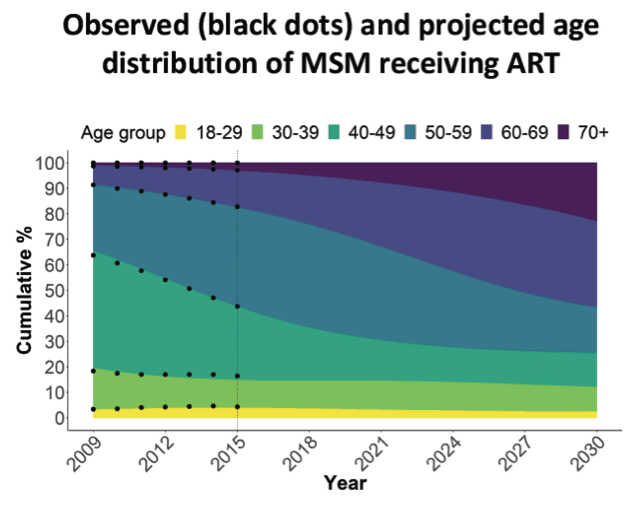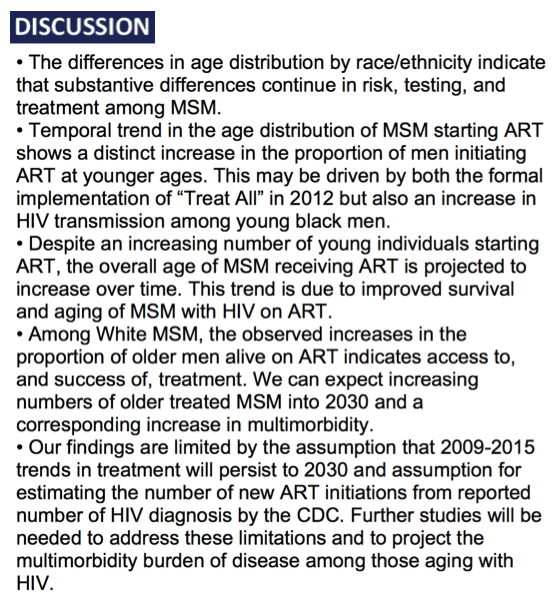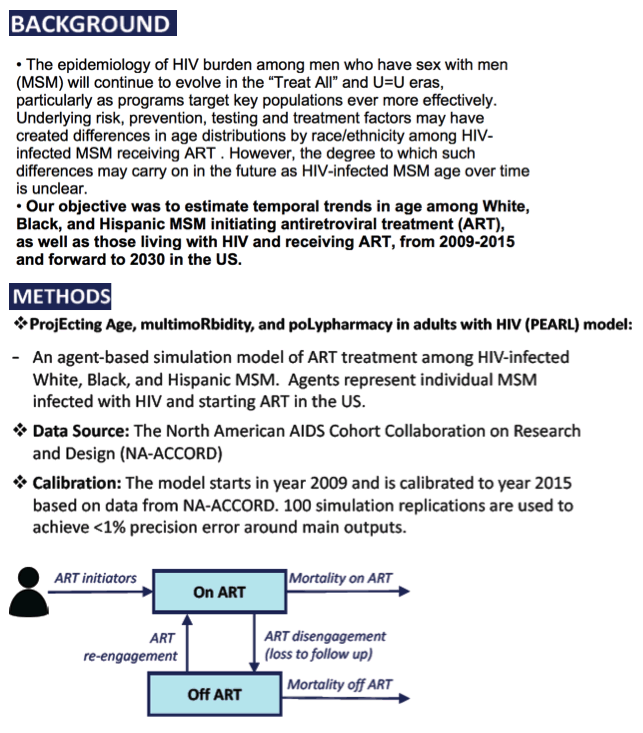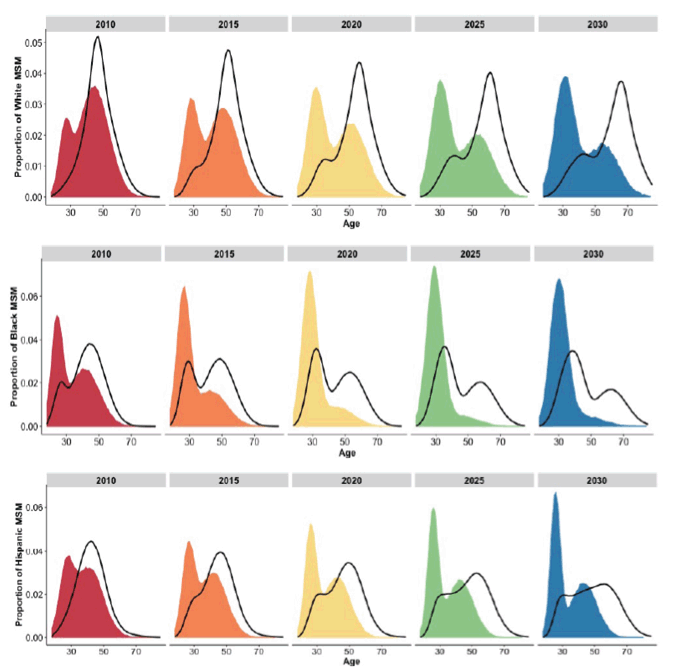 |
 |
 |
| |
THE PROJECTED AGE DISTRIBUTION OF WHITE,
BLACK, AND HISPANIC MSM ON ART, 2009-2030
|
| |
| |
NA-ACCORD projects about 20% will be over 70 by 2030 for whtes; for blacks & latinos these numbers will be smaller-see graphs below......."This study aims to project the age distribution of these groups to the year 2030 to inform policy and planning.......Among White MSM, the observed increases in the proportion of older men alive on ART indicates access to, and success of, treatment. We can expect increasing numbers of older treated MSM into 2030 and a corresponding increase in multi morbidity."

Reported by Jules Levin
CROI 2019 March 4-7 Seattle
Parastu Kasaie1, Elizabeth Humes2, Stephen J. Gange1, Amy C. Justice3, Kelly Gebo4, Cynthia Boyd2, Emily P. Hyle5, Carolyn Williams6, Jinbing Zhang1, Raquel Cruz-Stratton1, Robert S. Hogg7, Mari
Kitahata8, Richard D. Moore4, Keri N. Althoff1, for the North American AIDS Cohort Collaboration on Research and Design (NA-ACCORD) of IeDEA
1 Johns Hopkins Bloomberg School of Public Health, Baltimore, MD, USA, 2 Johns Hopkins University, Baltimore, MD, USA, 3 VA Connecticut Healthcare System, West Haven, CT, USA, 4 Johns Hopkins University School of Medicine, Baltimore, MD, USA, 5 Massachusetts General Hospital, Boston, MA, USA,
6 National Institute of Allergy and Infectious Diseases, Bethesda, MD, USA, 7 Simon Fraser University, Burnaby, BC, Canada, 8 University of Washington, Seattle, WA,USA

Program Abstract:
There are unique age distributions for US Black, White, and Hispanic men who have sex with men (MSM) being treated for HIV infection. Underlying risk, prevention, testing and treatment factors may have created these differences in age distributions by race/ethnicity among MSM. This study aims to project the age distribution of these groups to the year 2030 to inform policy and planning.
The NA-ACCORD was the source for mapping age distributions of those receiving ART in 2009, estimating the annual trend in age distribution of those initiating ART from 2009 to 2015, and modeling mortality rates as a function of time, CD4 count, and age at ART initiation among White, Black, and Hispanic MSM. Annual number of new HIV diagnoses and proportion of ART initiators among the race/ethnicity subgroups of MSM were from the US Centers for Disease Control and Prevention. Assuming observed (2009-15) trends would be projected to 2030, these estimates informed an agent-based simulation modeling the dynamics of ART initiation, aging, and mortality among White, Black, and Hispanic MSM in the US. 100 independent runs allowed a precision level of <1% around the model's estimates.
Observed age distributions for MSM subgroups in the NA-ACCORD from 2009-15 were a mixture of two distinct normally distributed age curves; this bimodal distribution was most distinct among Black MSM. Increased numbers of younger Black and Hispanic MSM on ART in the early Treat All era (2009-2015) impacted the projected age distribution to the year 2030, with younger age distributions among Black and Hispanic MSM and an older distribution among White MSM (Figure). As the number of White MSMs in the US is substantially greater than other racial groups, the overall age distribution of MSM with treated HIV shifted toward older ages through the year 2030.
The differences in age distribution by race/ethnicity indicate substantive differences continue in risk, testing, and treatment. The increase in younger Black and Hispanic MSM on ART is an encouraging indicator of effective test and treat interventions. This modeling indicates that a substantial proportion of MSM on ART will continue to be in high transmission risk age groups, particularly Hispanics, even in 2030. Among White MSM, the observed increases in the proportion of older men alive on ART indicates access to, and success of, treatment. We can expect increasing numbers of older treated MSM into 2030 and a corresponding increase in multimorbidity.




|
| |
|
 |
 |
|
|